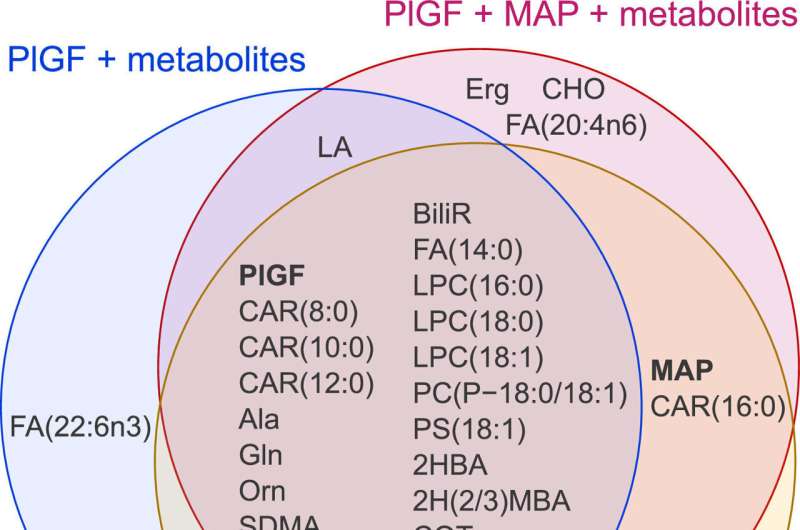This article has been reviewed according to Science X's editorial process and policies. Editors have highlighted the following attributes while ensuring the content's credibility:
fact-checked
trusted source
proofread
Screening test predicts preterm preeclampsia during pregnancy

Scientists have developed a new method to identify pregnant women who are at imminent risk of developing pre-eclampsia, a leading cause of disability and death.
Led by UCC spin-out company Metabolomic Diagnostics, in collaboration with King's College Hospital London, the new diagnostic method shows a 15% increase in detection rates in screening for preterm preeclampsia.
Preterm preeclampsia is a leading cause of maternal and perinatal death globally and can lead to unplanned preterm birth. Signs of preeclampsia include high blood pressure, high levels of protein in urine that indicate kidney damage, or other signs of organ damage. Globally, it causes more than 70,000 maternal deaths and 500,000 fetal deaths every year.
Preeclampsia presents a challenging scenario for medical professionals as it affects women of different races differently, placing black women at the highest risk. Additional risk factors include a first-time pregnancy, a medical history featuring hypertension or chronic kidney disease, diabetes, and an elevated body mass index. These risk factors were included in the study to demonstrate that risk screening can be personalized.
The research, published in the American Journal of Obstetrics & Gynecology MFM, reveals a significant advancement in preterm preeclampsia screening using a combination of metabolite biomarkers and established clinical markers
Dr. Robin Tuytten, CEO and CSO of Metabolomic Diagnostics, said, "This research clearly shows that metabolite biomarkers can be combined with established predictors, demonstrating the potential for personalized screening strategies tailored to individual patient profiles—precision medicine at its best."
"Our goal is to improve health equity by facilitating patient access to screening, acknowledging that every pregnant patient is different and achieving better pregnancy outcomes for all families. We want to improve current strategies and make screening available for every pregnancy."
Metabolomic Diagnostics is developing a simple blood test, based on their findings, that will be a low-cost test, suitable for population screening as its test volume capacity can easily be scaled in clinical laboratories. This test can be combined with current first-trimester clinical protocols in place, making risk of preeclampsia prediction simple, robust and accessible.
Professor John F. Cryan, UCC Vice President for Research and Innovation at UCC, said, "Congratulations to Metabolomic Diagnostics on the publication of this research, revealing a significant advancement in the detection of preterm preeclampsia. It is great to see a UCC spin-out company breaking ground by working to detect a leading cause of disability and death in infants as a result of this hypertensive disorder."
More information: Grégoire Thomas et al, Preterm preeclampsia screening using biomarkers: combining phenotypic classifiers into robust prediction models, American Journal of Obstetrics & Gynecology MFM (2023). DOI: 10.1016/j.ajogmf.2023.101110



















